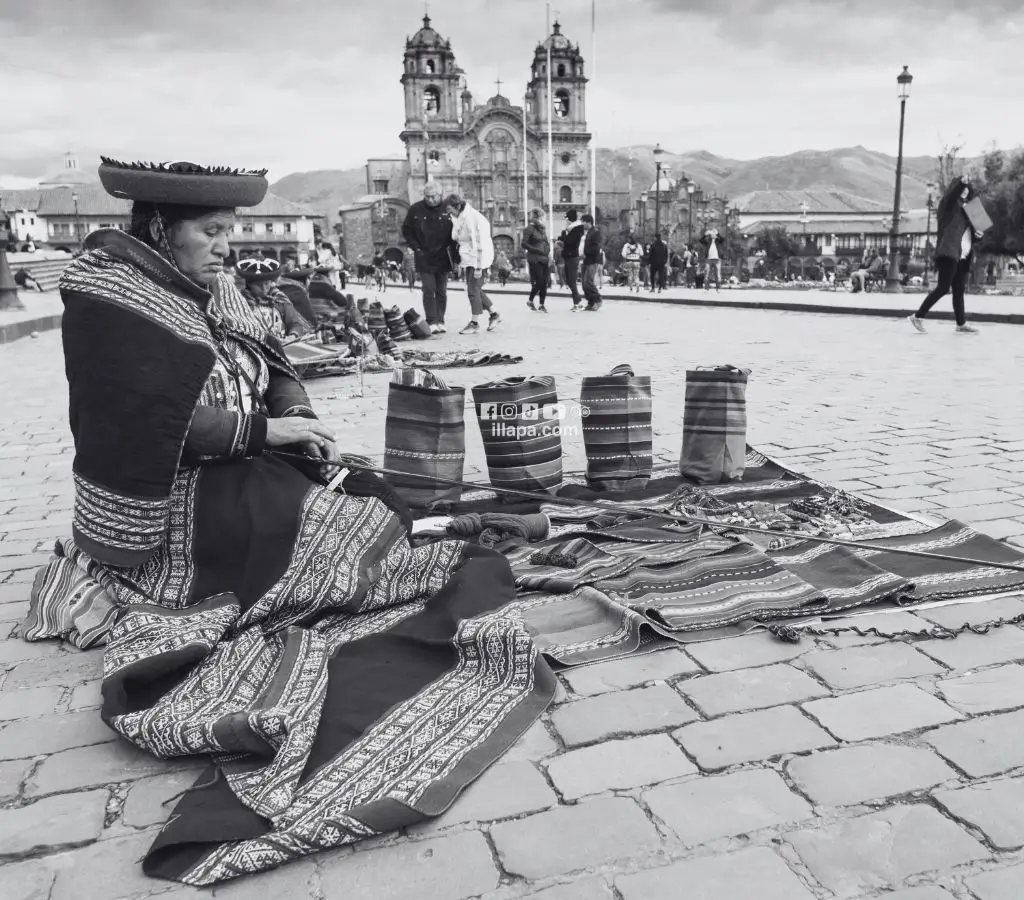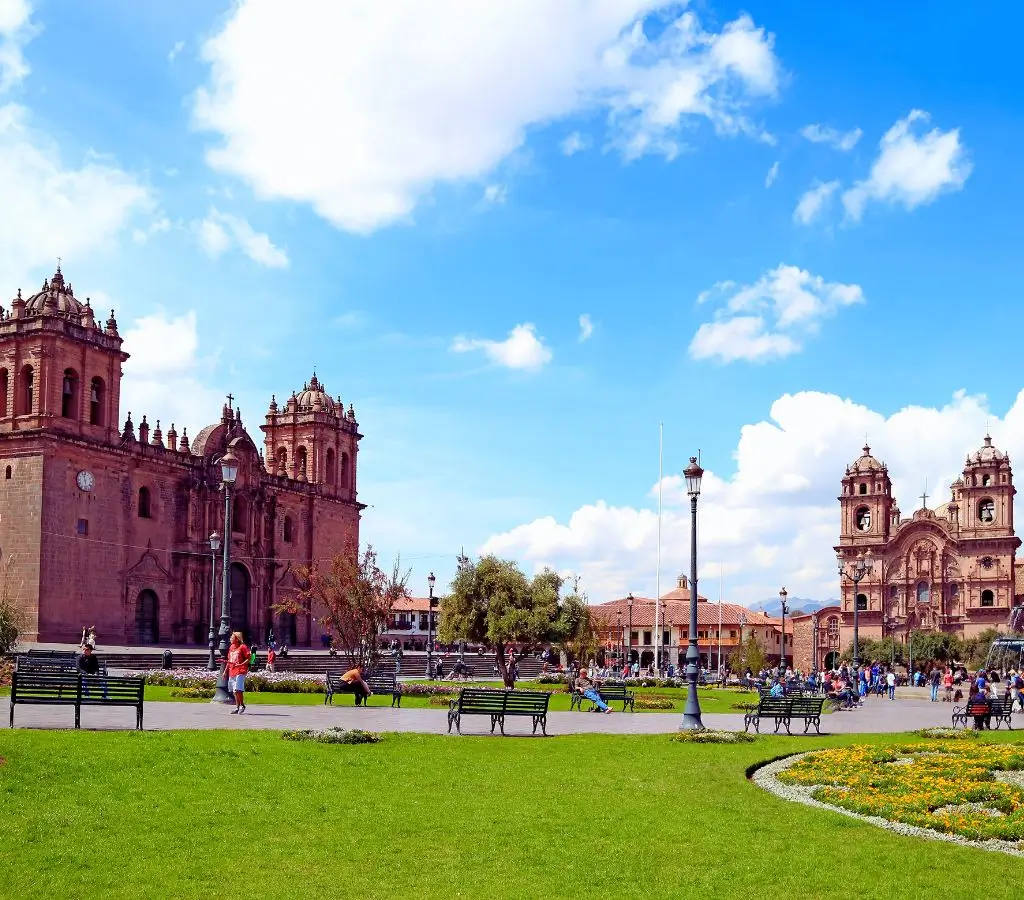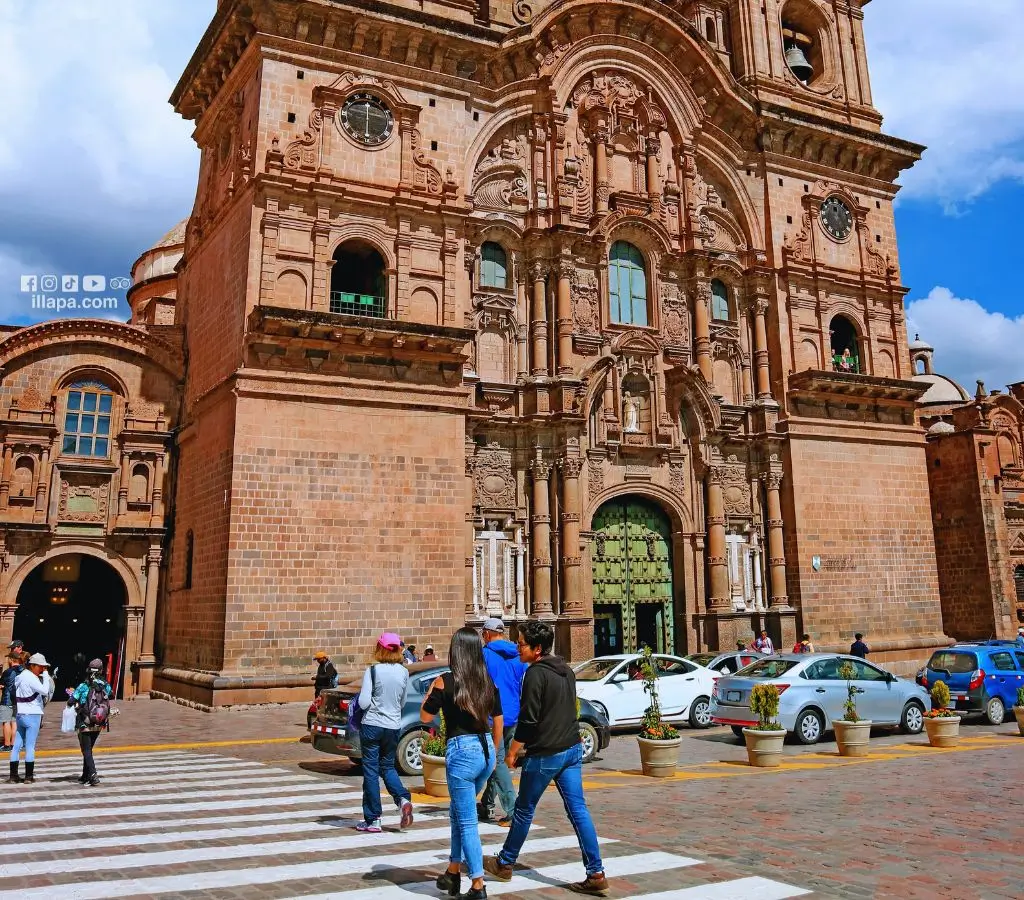The Plaza de Armas of Cusco, located in the center of the ancient Inca capital, is a key symbol of Peruvian history and culture; once the center of power of the Inca Empire, today it is a meeting and cultural celebration space.
The Plaza de Armas of Cusco, located in the city center, is an emblematic symbol of Peruvian history, known as Huacaypata during the Inca period; it was the epicenter of Inca power where ceremonial events, religious rituals, and festivities such as the Inti Raymi in honor of the sun god, Inti, took place.
Originally a swamp, the site was transformed by the Incas into the core of their capital under Manco Cápac, and later Pachacútec made it fully habitable by draining the land. Back then, the plaza was much larger and surrounded by important buildings such as the Palace of Viracocha Inca and the Acllahuasi, becoming a religious and administrative center.
With the arrival of Spanish conquerors in the 16th century, the plaza underwent significant transformations. The Spanish demolished several Inca temples, building churches and colonial structures over the ruins, a fusion that still endures in the plaza's current architecture, such as the Cusco Cathedral and the Church of the Society of Jesus.
Throughout the centuries, the Plaza de Armas has witnessed crucial historical events, including the rebellion of Túpac Amaru II in 1780, and today it continues to be a central place for meetings, celebrations, and tourists. With its mix of history, culture, and daily life, it remains a vibrant place that connects the Inca past with the present.

Before the consolidation of the Inca Empire, various pre-Inca cultures inhabited the Cusco region, excelling in agriculture and livestock; these societies developed advanced techniques such as terraces and built ceremonial monuments, reflecting a complex and spiritual social organization.
Around the 12th century AD, the Incas emerged among the tribes of the region. The founding legend of Cusco tells how Manco Cápac, descendant of the sun, founded the city and began the lineage of Inca rulers, reinforcing their divine right to power.
This myth also justified the Inca expansion and domination over other pre-existing cultures, as through their divine ancestry, the Incas consolidated their power, marking the beginning of an empire that would transform the Andean region.
Under the leadership of visionary rulers, the Inca state expanded rapidly, becoming the Tawantinsuyu, a vast and sophisticated empire; Cusco, as its capital, was not only the administrative center but also the cultural and spiritual heart of the empire.
The city of Cusco reflected the Inca worldview, with the Qoricancha at its center. This temple, dedicated to the sun god Inti and other gods, represented the spiritual heart of the empire, while the city's layout aligned with the stars and sacred mountains.
At its peak, Cusco was beautified with palaces, temples, and plazas, with impressive architecture still admired today. The Qhapaq Ñan road network connected Cusco to other regions, showcasing the empire's ability to integrate vast territories and facilitate trade and communications.
The arrival of the Spanish profoundly altered the Plaza de Armas, replacing Inca structures with colonial buildings. Despite these changes, the Inca foundations remain, leaving an indelible mark of the greatness of the Inca past in the current plaza.
The Plaza de Armas, located in the historic center of Cusco, was declared a UNESCO World Heritage Site in 1983. Surrounded by colonial buildings, the plaza is a key place to learn about the city's history, with monuments such as the Cusco Cathedral and the Church of the Society of Jesus.
This space, once the heart of the Inca Empire, remains a testament to the fusion of Inca and colonial structures. The cobblestone streets and colonial mansions reflect the rich cultural heritage that defines Cusco today.
The Plaza de Armas, located in the center of Cusco, is a key place to explore the city's historic center, recognized as a UNESCO World Heritage Site. From here, you can easily access various cultural and historical points of interest.

Getting to the Plaza Mayor of Cusco is easy thanks to its central location. From Alejandro Velasco Astete Airport, visitors can take a taxi or public transportation, with a travel time of approximately 15 to 30 minutes, depending on traffic, passing through Av. Sol.
Many tourists prefer to walk to the plaza since most hotels and hostels are nearby. This allows them to enjoy the charm of the cobblestone streets and the historic architecture as they approach the heart of the city.
It is hard to get lost, as the streets are well signposted, and locals are always willing to help visitors. Additionally, the city's layout makes the Plaza de Armas an easily accessible destination from any point in Cusco.
The Plaza stands out for the fusion of Inca and colonial architecture. The colonial buildings, constructed over Inca foundations, feature decorated facades and wooden balconies characteristic of the era.
Meanwhile, the Inca stone foundations, with precise carvings, can still be seen in various parts, showcasing the advanced engineering of the Incas. This architectural blend reflects both the history of colonization and the resilience of Inca culture.
The Plaza de Armas was the center of the Inca world, known as "Qosqo," and the stage for key ceremonies such as the Inti Raymi. With the arrival of the Spanish, it maintained its importance as a center of power, transforming into a symbol of colonial administration and the Christian faith, and today it remains a key place for celebrations and cultural events in Cusco.
The Plaza de Armas has witnessed key events, from Inca ceremonies to colonial acts after the conquest. This transformation shows how the space shifted from being an Inca religious center to a symbol of Spanish control in the New World.
Today, the Plaza is an active center for both locals and tourists, where traditional events like Corpus Christi and Inti Raymi are celebrated. It is also a place of cultural interaction, with performances, craft vendors, and musicians, reflecting the vibrancy of the city.
Cusco, today, is a key destination to explore Peruvian identity, offering a unique blend of art, gastronomy, and local culture. The city's social life and the warmth of its inhabitants make this place an essential spot to explore the cultural diversity of Latin America.
The Plaza de Armas of Cusco, the historic and cultural center of the ancient Inca capital, offers a unique blend of history and modern life. Visitors can explore its monuments, participate in cultural events, and enjoy local gastronomy, all in one place.

It stands out for its emblematic monuments, such as the Cusco Cathedral and the Church of the Society of Jesus, which reflect the city's rich history. These buildings combine Inca and colonial architecture, offering a unique view of Cusco's cultural and religious evolution.
The combination of Inca construction techniques with Spanish styles gives the plaza a uniqueness that makes it a valuable architectural and cultural heritage. This makes the Plaza de Armas an essential place to understand the city's history and its transformation over the centuries.

It is the center of important celebrations like Inti Raymi and Corpus Christi, which highlight Cusco's rich cultural tradition. Additionally, other festivals such as Holy Week and Carnival add a vibrant mix of devotion, color, and joy to the plaza's atmosphere.
For those who want to explore Cusco's local gastronomy and commerce, among its restaurants, cafés, and food stalls, tourists can try traditional dishes like roasted guinea pig, chicha morada, and Peruvian ceviche, while enjoying alpaca crafts and textiles sold by nearby shops.
Visit Cusco, one of Peru's most iconic destinations, and experience a unique and unforgettable adventure with Illapa Culturas Andinas. It will undoubtedly be an adventure you’ll enjoy to the fullest.


